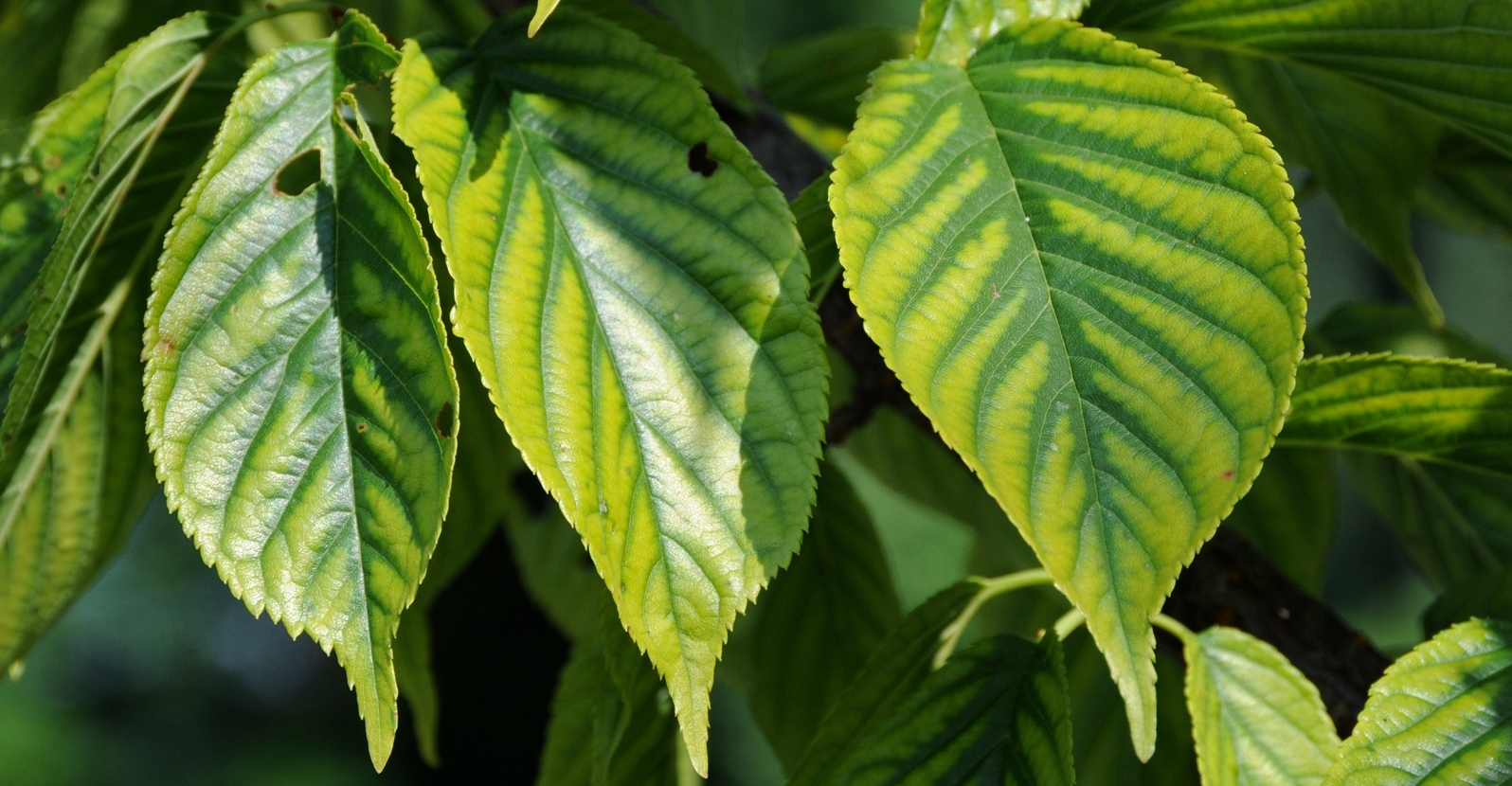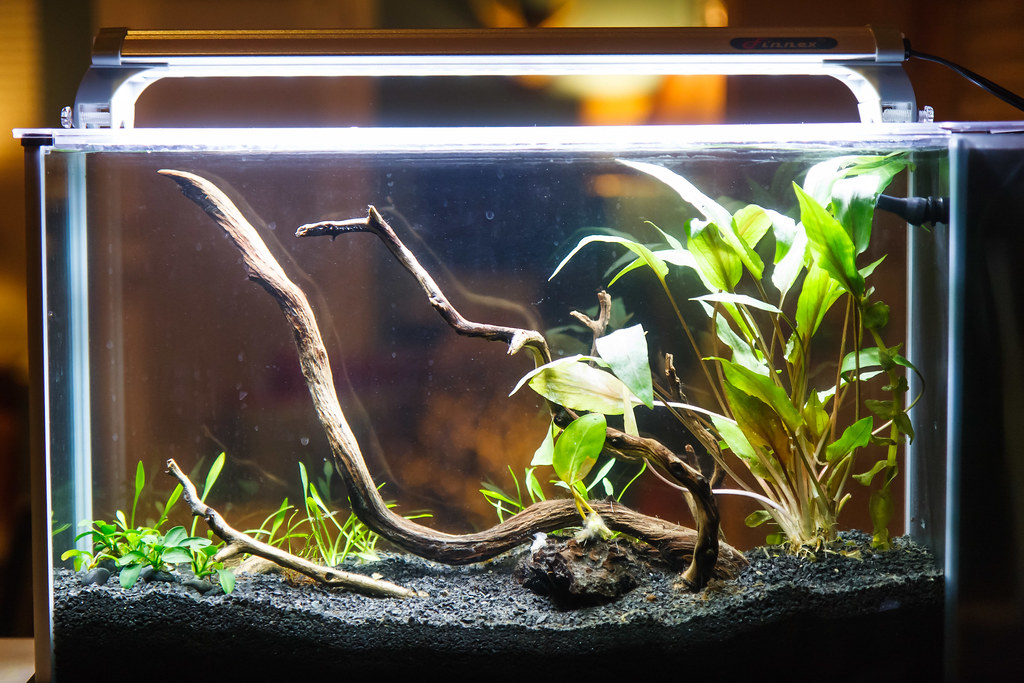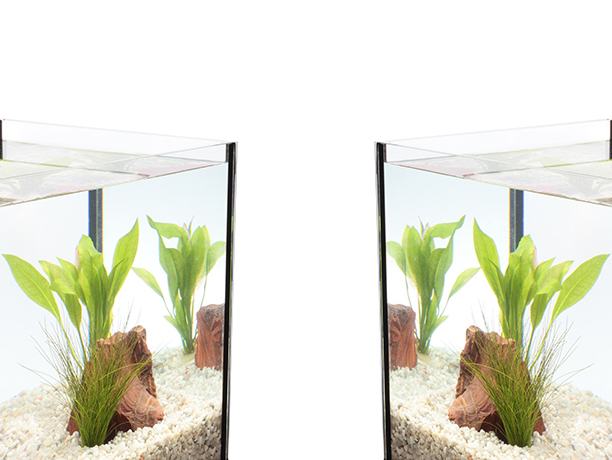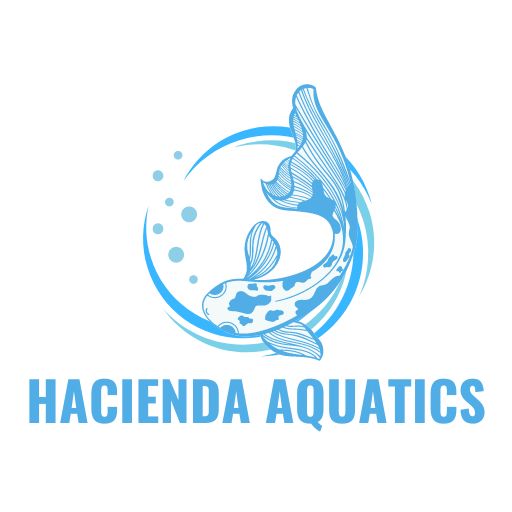Aquatic Knowledge
Why Do Aquarium Plants Melt? Understanding the Causes and Solutions
Aquarium plants are a beautiful addition to any fish tank, but one common issue many aquarists face is “plant melting.” If you’re new to the hobby or even an experienced fish keeper, you might find yourself wondering: why do aquarium plants melt?
Plant melting can be frustrating, especially when you’ve just invested time and money into cultivating a lush underwater garden. But don’t worry—melting plants don’t always mean they’re doomed. In this article, we’ll explore the reasons why aquarium plants melt, what you can do to prevent it, and how to keep your aquatic plants healthy and thriving.
Why Do Aquarium Plants Melt?
Nutrient Deficiency

Overview
Aquarium plants thrive on a balanced supply of essential nutrients, which support their growth and overall health. When there is a deficiency in one or more of these nutrients, plants can exhibit various symptoms, including leaf melting. Nutrient deficiencies disrupt crucial physiological processes, impacting plant vitality and appearance. Understanding these deficiencies can help in diagnosing and addressing plant health issues effectively.
Common Deficiencies
Nitrogen
- Importance: Nitrogen is a key component of chlorophyll, the pigment responsible for photosynthesis. It also plays a critical role in the production of amino acids and proteins, which are vital for plant growth and development.
- Symptoms: A lack of nitrogen often results in yellowing of older leaves, as the plant mobilizes nitrogen from older tissues to support new growth. This can also lead to slower overall growth and reduced vigor.
Phosphorus
- Importance: Phosphorus is essential for energy transfer within plants. It contributes to root development, flowering, and the formation of DNA and RNA. Adequate phosphorus is crucial for healthy root systems and robust plant growth.
- Symptoms: Phosphorus deficiency typically manifests as dark or purplish leaves. This is because phosphorus is crucial for energy transfer, and a lack of it can stunt growth and impair root development.
Potassium
- Importance: Potassium is vital for regulating water uptake and enzyme activation. It helps plants maintain turgor pressure, which is essential for cell structure and function. Potassium also aids in the synthesis of proteins and starches.
- Symptoms: A deficiency in potassium usually leads to leaf edge necrosis, where the edges of the leaves turn brown and die. This can also result in poor growth and reduced overall health.
Trace Elements
- Importance: Trace elements, including iron, manganese, and zinc, are required in smaller amounts but are critical for various physiological processes. These elements are involved in enzyme function, chlorophyll synthesis, and other essential metabolic activities.
- Symptoms: Deficiencies in trace elements often present as interveinal chlorosis (yellowing between leaf veins) and stunted growth. Without these elements, plants struggle to perform essential functions, leading to weakened health.
Symptoms
- Yellowing of Older Leaves: Often the first sign of nutrient deficiency, especially with nitrogen deficiency. As older leaves lose their green color, it indicates that the plant is reallocating nutrients to new growth.
- Stunted Growth and Poor Overall Development: Deficient nutrients lead to impaired development, resulting in smaller, less vigorous plants.
- Leaf Drop and Reduced Plant Vigor: Plants may shed leaves prematurely, and overall vigor diminishes as the plant struggles to sustain itself with insufficient nutrients.
Poor Lighting Conditions

Overview
Light is fundamental to photosynthesis, the process through which plants convert light energy into chemical energy to fuel growth. In an aquarium, inadequate lighting can severely impact plant health, leading to various problems including weak growth and increased susceptibility to diseases. Proper lighting conditions are crucial for the well-being of aquarium plants.
Inadequate Light
Low Light Intensity
- Impact: Insufficient light intensity reduces the efficiency of photosynthesis, causing plants to grow weakly and develop elongated stems as they stretch toward the light source.
- Symptoms: Plants may exhibit spindly, leggy growth with elongated stems as they attempt to reach for more light. This often results in weakened, less robust plants.
Short Light Duration
- Impact: Plants require a certain duration of light each day to complete the photosynthesis process effectively. Too little light exposure can prevent plants from producing the energy they need for healthy growth.
- Symptoms: Short light durations can lead to poor growth, with plants failing to develop properly. Leaf drop and poor growth are common symptoms as plants struggle to perform essential functions without adequate light.
Symptoms
- Algae Overgrowth on Plant Surfaces: Algae often thrive in conditions where plant growth is inhibited. Algae growth can cover plant surfaces, blocking light and further stressing the plants.
- Leggy, Spindly Growth with Elongated Stems: Plants will grow tall and thin as they attempt to reach for more light, resulting in a less healthy appearance and weakened structure.
- Leaf Drop and Poor Growth: Without sufficient light, plants may shed leaves and fail to grow properly, leading to a reduction in overall plant health and aquarium aesthetics.
Incorrect Water Parameters

Overview
Water quality is crucial for maintaining healthy aquarium plants. Various water parameters, such as pH, hardness, and temperature, significantly affect plant health and growth. Incorrect water parameters can stress plants and lead to a range of problems, including leaf melting and poor overall plant health. Regular monitoring and adjustments are essential to keep the aquatic environment conducive to plant life.
Common Issues
pH Imbalance
The pH level of water affects the availability of nutrients to plants. Both high and low pH levels can interfere with nutrient uptake and overall plant health.
- High pH: A pH level that is too high can cause nutrient lockout, where essential nutrients become unavailable to the plants.
- Low pH: A pH level that is too low can lead to excessive absorption of some nutrients while inhibiting others, leading to imbalances.
Hardness
Water hardness refers to the concentration of calcium and magnesium in the water. Both extremely soft and hard water can stress plants.
- Soft Water: Very soft water may lack essential minerals required for plant growth, leading to deficiencies.
- Hard Water: Extremely hard water can lead to the accumulation of mineral deposits on plants, potentially harming them and causing imbalances.
Temperature Extremes
Temperature fluctuations or extremes can cause significant stress to plants. Plants have specific temperature ranges within which they thrive.
- High Temperatures: Excessive heat can increase the rate of metabolic processes, leading to quicker nutrient depletion and increased stress.
- Low Temperatures: Cold temperatures can slow down metabolism, impair nutrient uptake, and lead to poor growth.
Symptoms
- Browning Edges and Melting Leaves: Incorrect water parameters can cause the edges of leaves to turn brown and eventually lead to melting or decay.
- Reduced Growth and Poor Overall Appearance: Plants may exhibit stunted growth and a generally poor appearance if water parameters are not within the optimal range.
- Changes in Plant Structure or Leaf Texture: You might notice abnormal changes in leaf structure or texture, such as curling or deformation, indicating stress due to unsuitable water conditions.
Substrate Problems

Overview
The substrate in an aquarium provides essential support and nutrients for plant roots. Problems with the substrate can severely impact plant health and growth. Choosing the right substrate and maintaining it properly are crucial for sustaining healthy aquatic plants.
Common Issues
Poor Quality Substrate
- Impact: Low-quality or inappropriate substrates may lack essential nutrients needed for plant health. Poor substrates can also affect water chemistry and overall plant growth.
- Inappropriate Materials: Substrates that do not support plant roots effectively or contain harmful chemicals can lead to poor plant development.
Lack of Nutrients
- Impact: Substrates that do not supply adequate nutrients can lead to deficiencies in plants, affecting their growth and overall health.
- Nutrient Deficiencies: Without a nutrient-rich substrate, plants may struggle to obtain essential elements, resulting in poor growth and health.
Compacted Substrate
- Impact: Compacted substrates can impede root growth and nutrient absorption, leading to poor plant health and stunted growth.
- Reduced Oxygen Flow: Compaction can reduce oxygen availability to plant roots, contributing to root rot and other problems.
Symptoms
- Root Rot and Poor Root Development: Plants may exhibit root rot or poorly developed roots if the substrate is too compacted or lacks nutrients.
- Melting or Decaying Leaves: Melting or decaying leaves are common signs of substrate-related issues, as plants are unable to sustain themselves properly.
- Stunted Plant Growth: Plants growing slowly or exhibiting stunted growth can be a direct result of substrate problems impacting nutrient availability and root health.
Poor CO2 Levels
Overview
Carbon dioxide (CO2) is essential for photosynthesis, the process through which plants produce their food. Adequate CO2 levels are necessary for healthy growth and development of aquarium plants. Low or uneven CO2 levels can lead to a range of plant health issues.
Common Issues
Low CO2 Concentration
- Impact: Insufficient CO2 levels can limit the efficiency of photosynthesis, resulting in poor plant growth and health.
- Symptoms: Plants may exhibit yellowing leaves, slow growth, and general poor health due to inadequate carbon availability for photosynthesis.
Inefficient CO2 Distribution
- Impact: Poor distribution of CO2 in the tank can lead to uneven growth, with some areas of the tank receiving more CO2 than others.
- Symptoms: Uneven plant growth and variations in health can result from inefficient CO2 distribution, leading to weak or poorly developed plants in affected areas.
Symptoms
- Yellowing Leaves and Slow Growth: Leaves may turn yellow and plants may grow slowly if CO2 levels are insufficient.
- Leaf Drop and Poor Overall Health: Inadequate CO2 can lead to leaf drop and a general decline in plant health.
- Stunted or Weak Plant Development: Plants may show stunted or weak growth if CO2 levels are not properly maintained.
Algae Overgrowth
Overview
Algae can compete with aquarium plants for light and nutrients, impacting their overall health. Algae overgrowth often signals underlying issues with light, nutrients, or water conditions. Managing algae is crucial for maintaining a healthy balance in the aquarium ecosystem.
Types of Algae
- Green Algae: Often indicates excess light or nutrient imbalances. Green algae can cover plant surfaces, reducing light absorption and affecting plant health.
- Brown Algae: Typically associated with poor water quality or low light conditions. Brown algae can smother plants and compete for resources.
- Red Algae: May signal high nutrient levels or low CO2. Red algae can be problematic, affecting the appearance and health of plants.
Symptoms
- Algae Covering Plant Leaves, Reducing Light Absorption: Algae growth can block light, making it difficult for plants to perform photosynthesis.
- Reduced Plant Growth and Overall Health: Excess algae can lead to reduced plant growth and health by depriving plants of light and nutrients.
- Melting or Deteriorating Leaves: Algae overgrowth can cause leaves to melt or deteriorate due to reduced light and competition for nutrients.
Pest Infestation
Overview
Pests can cause significant damage to aquarium plants, disrupting their health and growth. Identifying and managing pest infestations is essential for maintaining a healthy aquatic environment.
Types of Pests
- Snails: Snails can graze on plant leaves, causing physical damage and disrupting plant health.
- Aphids: These small insects suck plant juices, leading to stress and weakened plant health.
- Plant-Eating Fish: Some fish species may nibble on or consume plant leaves, causing damage and affecting plant health.
Symptoms
- Holes and Tears in Leaves: Physical damage to leaves from pests can result in holes and tears, compromising plant health.
- Leaf Curling and Distortion: Pests can cause leaves to curl or distort, indicating damage or stress.
- Rapid Plant Decay and Poor Health: Infestations can lead to rapid decay and overall poor plant health, impacting the entire aquarium ecosystem.
Understanding and addressing the reasons why aquarium plants may melt or experience dying leaves is crucial for maintaining a healthy tank environment. Regular monitoring of nutrient levels, water parameters, lighting conditions, and pest presence can help prevent and address these issues. By taking proactive steps, you can ensure your aquatic plants thrive and contribute to a vibrant, balanced aquarium ecosystem.
How to Prevent Aquarium Plants from Melting
Preventing plant melting isn’t as difficult as it may seem. By taking the right steps, you can keep your plants healthy and vibrant.
Gradual Acclimation
When introducing new plants to your tank, give them time to acclimate to their new environment. Slowly adjusting them to your water’s chemistry, temperature, and lighting conditions can help reduce stress and prevent melting.
Proper Lighting
Ensure your plants receive the right amount of light for their needs. Some species require high-intensity lighting, while others thrive in low light. Research the lighting requirements for each plant species in your tank and adjust your lighting setup accordingly.
Balanced Nutrients
Aquarium plants require a balanced supply of nutrients, including macronutrients like nitrogen and micronutrients like iron. Consider using root tabs, liquid fertilizers, or nutrient-rich substrate to ensure your plants are getting everything they need.
Adequate CO2 Levels
If you notice your plants struggling or melting, it may be due to insufficient CO2. Investing in a CO2 injection system or using a liquid CO2 supplement can help boost plant growth and prevent melting.
Best Practices for Keeping Aquarium Plants Healthy
If you want to keep your plants in top shape, here are a few key practices to follow:
- Regular Water Changes: This helps maintain nutrient balance and prevent algae buildup.
- Pruning Dead Leaves: Removing damaged or melting leaves encourages new growth.
- Monitor Water Parameters: Keeping a close eye on pH, nitrate, and CO2 levels will help maintain a healthy environment for your plants.
- Use Quality Fertilizers: A good fertilizer provides essential nutrients to plants, helping them grow lush and green.
Common Mistakes Aquarists Make
- Overexposure to Light: Excessive light can cause algae growth, which competes with plants for nutrients and leads to melting.
- Ignoring Water Chemistry: Not testing water parameters regularly can result in imbalances that stress plants.
- Neglecting CO2 Levels: Low CO2 can significantly impact plant health and contribute to melting.
Conclusion
So, why do aquarium plants melt? The answer often lies in environmental stress, improper lighting, nutrient deficiencies, and CO2 imbalances. While melting can be disheartening, it doesn’t always spell the end for your plants. With proper care, many plants can recover and thrive in their new environment.
FAQs
What is the most common cause of plant melting in aquariums?
Nutrient deficiencies and poor lighting are among the most common causes of plant melting in aquariums.
How can I correct a nutrient deficiency in my aquarium plants?
Use a balanced fertilizer and regularly test water parameters to ensure all essential nutrients are available.
What are the signs of poor lighting affecting aquarium plants?
Signs include leggy growth, algae overgrowth, and leaf drop.
How often should I test my water parameters for aquarium plants?
Test your water parameters weekly or bi-weekly to ensure optimal conditions for plant health.
What are the best practices for preventing algae overgrowth in an aquarium?
Maintain proper lighting, balance nutrients, and avoid overfeeding to prevent algae overgrowth.
